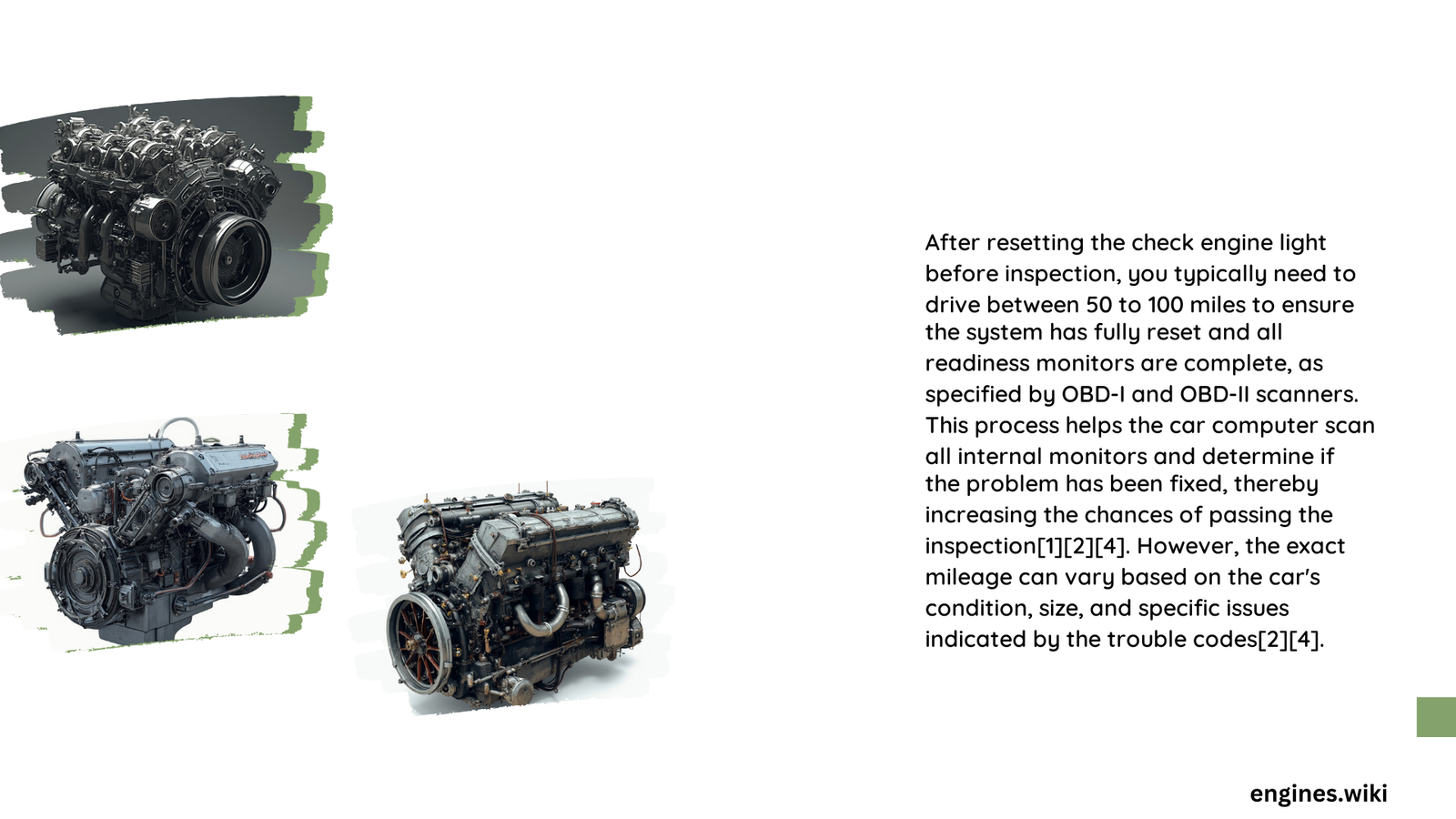When preparing your vehicle for inspection after resetting the check engine light, understanding the precise diagnostic and reset procedures becomes crucial. Proper reset techniques involve more than simply clearing error codes; they require comprehensive system verification, drive cycle completion, and ensuring all vehicle monitoring systems are functioning correctly to guarantee a successful inspection outcome.
What Happens Immediately After Resetting Check Engine Light?
Understanding Diagnostic Readiness
After resetting the check engine light, your vehicle’s onboard computer (ECM) initiates a series of self-diagnostic procedures. These procedures verify the functionality of various vehicle systems and emissions components. The process isn’t instantaneous and requires specific driving conditions to complete.
Key Diagnostic Verification Steps
| System Component | Verification Method | Typical Duration |
|---|---|---|
| Oxygen Sensors | Multiple Drive Cycles | 15-50 miles |
| Catalytic Converter | Continuous Monitoring | 100-200 miles |
| Fuel System | Idle and Acceleration Tests | 30-75 miles |
How Long Before Inspection Readiness?
The time required to achieve full inspection readiness varies depending on several factors:
- Vehicle Make and Model
- Modern vehicles typically require 50-100 miles of driving
-
Older vehicles might need multiple short and long drive cycles
-
Specific Error Codes
- Some diagnostic trouble codes (DTCs) require more extensive testing
- Complex system errors might need professional diagnostic equipment
What Are Potential Challenges After Reset?

Persistent Diagnostic Challenges
Resetting the check engine light doesn’t automatically resolve underlying mechanical issues. Potential challenges include:
- Unresolved sensor malfunctions
- Intermittent electrical system problems
- Incomplete emissions system diagnostics
Recommended Pre-Inspection Strategies
Comprehensive Vehicle Preparation
- Complete Full Drive Cycle
- Drive at varied speeds
- Include highway and city driving conditions
-
Maintain consistent engine temperatures
-
Monitor Warning Indicators
- Check for recurring check engine light
- Observe any unusual vehicle performance
- Use OBD-II scanner for real-time diagnostics
How To Ensure Successful Inspection?
Professional Diagnostic Recommendations
- Allow minimum 3-5 days after reset before inspection
- Perform comprehensive vehicle systems check
- Verify all readiness monitors are complete
- Address any remaining diagnostic trouble codes
Critical Inspection Preparation Checklist
- ✓ Reset check engine light using recommended method
- ✓ Complete full drive cycle
- ✓ Verify all system monitors are active
- ✓ Check for pending or current error codes
- ✓ Ensure no active diagnostic trouble codes
Technical Insights
Modern vehicle onboard diagnostic systems are sophisticated. Simply clearing a check engine light doesn’t guarantee system readiness. The ECM requires specific driving conditions to validate system functionality and reset readiness monitors.
Expert Tip
Professional mechanics recommend using an advanced OBD-II scanner capable of reading manufacturer-specific protocols for most accurate diagnostics.
Final Technical Considerations
Successful vehicle inspection after check engine light reset demands patience, systematic approach, and understanding of your specific vehicle’s diagnostic requirements. Each vehicle model has unique reset and verification procedures.
Pro Recommendation: If uncertainty persists, consult a certified automotive technician for comprehensive diagnostic evaluation.
Potential Cost Implications
Incomplete diagnostic procedures might lead to:
– Failed vehicle inspection
– Additional diagnostic fees
– Potential repair costs
Conclusion
Navigating post-check engine light reset requires methodical approach, technical understanding, and patience. By following comprehensive diagnostic procedures, drivers can successfully prepare their vehicles for inspection.
